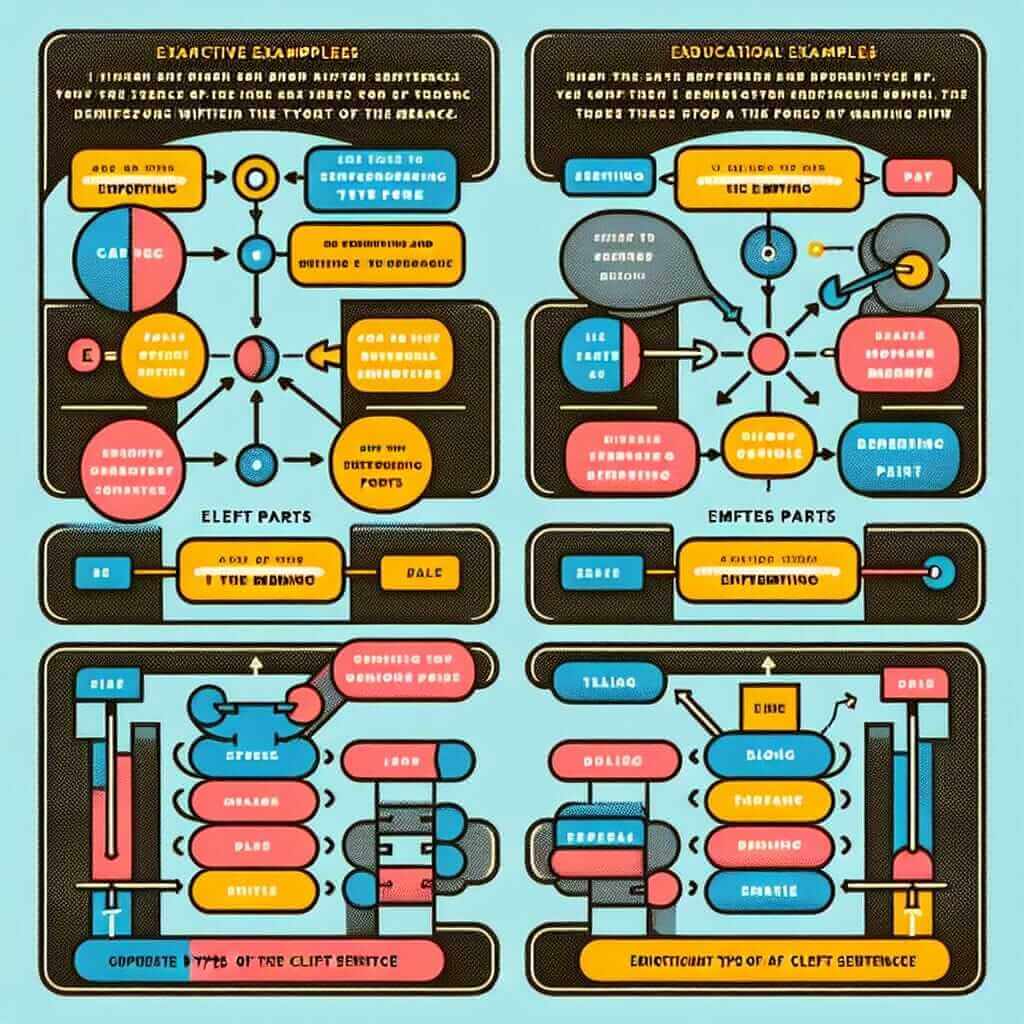Cleft sentences are used to emphasize a particular part of a sentence. They are formed by dividing a simple sentence into two clauses, one of which begins with a cleft pronoun (what, it, all) or a wh-clause (who, where, when, why). This structure allows you to draw attention to specific information, which can be particularly useful in the IELTS exam to demonstrate a wider range of grammatical structures and enhance your writing and speaking.
Here are a few examples of how cleft sentences can be used in different sections of the IELTS exam:
- Speaking (Part 2): “Describe a memorable journey you have taken.” > “It was the breathtaking views from the train window that truly made the journey unforgettable.“
- Writing (Task 1): “The graph shows the number of people who visited a museum over a period of five years.” > “What is immediately apparent from the graph is a significant increase in visitor numbers between 2010 and 2012.”
- Writing (Task 2): “Some people believe that technology has made our lives easier, while others disagree. Discuss both views and give your own opinion.” > “While technology has undoubtedly brought many benefits, what concerns me most is its potential impact on our social skills.”
Understanding Cleft Sentences in IELTS
Cleft sentences are not a separate grammar point tested on the IELTS. Instead, they are a sophisticated grammatical structure that can help you express your ideas more clearly and emphatically. Using them effectively can demonstrate a good command of grammar and contribute to a higher band score, particularly in the Writing and Speaking sections.
Types of Cleft Sentences and Their Uses
1. It-Cleft Sentences
Structure: It + be + emphasized part + that/who/which + rest of the sentence
Function: Used to emphasize the subject, object, adverbial phrase, or prepositional phrase of a sentence.
Examples:
-
Original: I lost my passport in the airport.
-
It-cleft: It was my passport that I lost in the airport. (Emphasizing the object)
-
Original: The government should invest more in renewable energy.
-
It-cleft: It is the government who should invest more in renewable energy. (Emphasizing the subject)
IELTS Application: In Writing Task 1, you can use it-clefts to highlight key features in a graph or chart. For instance, “It was in 2015 that the sales figures peaked” effectively emphasizes the year of peak sales.
2. Wh-Cleft Sentences
Structure: Wh-clause + be + emphasized part
Function: Used to emphasize the subject, object, or adverbial phrase of a sentence.
Examples:
-
Original: She needs a good night’s sleep.
-
Wh-cleft: What she needs is a good night’s sleep. (Emphasizing the object)
-
Original: I admire his determination the most.
-
Wh-cleft: What I admire most about him is his determination. (Emphasizing the object of the preposition)
IELTS Application: In Speaking Part 3, when expressing your opinions, you can use wh-clefts to add weight to your viewpoints. For example, “What I believe is that education plays a crucial role in personal development” sounds more impactful than simply saying “I believe education is important.”
3. All-Cleft Sentences
Structure: All + subject + verb + be + emphasized part
Function: Used to emphasize a part of the sentence while implying that nothing else is important or relevant.
Examples:
- Original: I only want to travel the world.
- All-cleft: All I want to do is travel the world. (Emphasizing the action)
IELTS Application: You can use all-clefts in Writing Task 2 to make your arguments more persuasive. For instance, “All that is needed is a concerted effort from all nations to combat climate change” emphasizes the importance of a collective effort.

Achieving a Higher Band Score: Using Cleft Sentences Effectively
- Variety and Accuracy: Use a variety of cleft sentence structures accurately to showcase a wider range of grammatical structures.
- Appropriate Emphasis: Ensure the emphasized information is relevant to the context and contributes to the overall message.
- Natural Language: Use cleft sentences naturally and avoid overusing them, as this can make your writing or speaking sound forced.
Common Mistakes to Avoid
- Incorrect Word Order: Ensure the correct word order is maintained within the cleft structure.
- Overuse of “That”: Explore using “who” or “which” instead of “that” where appropriate to demonstrate a wider vocabulary.
- Unnecessary Emphasis: Avoid using cleft sentences for information that doesn’t need extra emphasis.
Conclusion
Mastering cleft sentences can be a valuable asset for achieving a Band 7+ on the IELTS. By understanding their structure, function, and application, you can effectively use them to enhance your writing and speaking, demonstrating a sophisticated grasp of English grammar and achieving your desired score. Remember to practice implementing them in various contexts related to the IELTS exam to build your confidence and fluency.